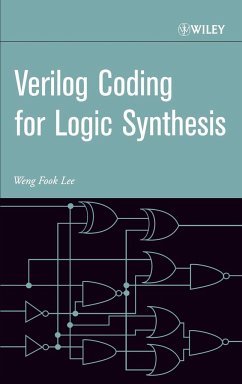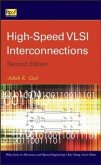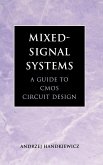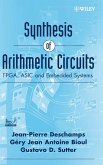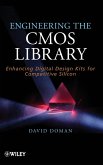Provides a practical approach to Verilog design and problem solving. Bulk of the book deals with practical design problems that design engineers solve on a daily basis. Includes over 90 design examples. There are 3 full scale design examples that include specification, architectural definition, micro-architectural definition, RTL coding, testbench coding and verification. Book is suitable for use as a textbook in EE departments that have VLSI courses.
A practical introduction to writing synthesizable Verilog code. Rapid change in IC chip complexity and the pressure to design more complex IC chips at a faster pace has forced design engineers to find a more efficient and productive method to create schematics with large amounts of logic gates. This has led to the development of Verilog; one of the two types of Hardware Description Language (HDL) currently used in the industry. Verilog Coding for Logic Synthesis is a practical text that has been written specifically for students and engineers who are interested in learning how to write synthesizable Verilog code. Starting with simple verilog coding and progressing to complex real-life design examples, Verilog Coding for Logic Synthesis prepares you for a variety of situations that are bound to occur while utilizing Verilog. Expert design engineer Weng Fook Lee: Introduces the usage of Verilog and VHDL Describes a design flow for ASIC design Discusses basic concepts of Verilog coding Explores the common practices and coding style that are used when coding for synthesis and shows you the common coding style on Verilog operators Explains how a design project of a programmable timer is implemented. Reveals the design of a programmable logic block for peripheral interface. Filled with practical advice, functional flowcharts and waveforms, and over ninety examples, Verilog Coding for Logic Synthesis will help you fully understand the concepts and coding style of important industry language.
A practical introduction to writing synthesizable Verilog code. Rapid change in IC chip complexity and the pressure to design more complex IC chips at a faster pace has forced design engineers to find a more efficient and productive method to create schematics with large amounts of logic gates. This has led to the development of Verilog; one of the two types of Hardware Description Language (HDL) currently used in the industry. Verilog Coding for Logic Synthesis is a practical text that has been written specifically for students and engineers who are interested in learning how to write synthesizable Verilog code. Starting with simple verilog coding and progressing to complex real-life design examples, Verilog Coding for Logic Synthesis prepares you for a variety of situations that are bound to occur while utilizing Verilog. Expert design engineer Weng Fook Lee: Introduces the usage of Verilog and VHDL Describes a design flow for ASIC design Discusses basic concepts of Verilog coding Explores the common practices and coding style that are used when coding for synthesis and shows you the common coding style on Verilog operators Explains how a design project of a programmable timer is implemented. Reveals the design of a programmable logic block for peripheral interface. Filled with practical advice, functional flowcharts and waveforms, and over ninety examples, Verilog Coding for Logic Synthesis will help you fully understand the concepts and coding style of important industry language.

